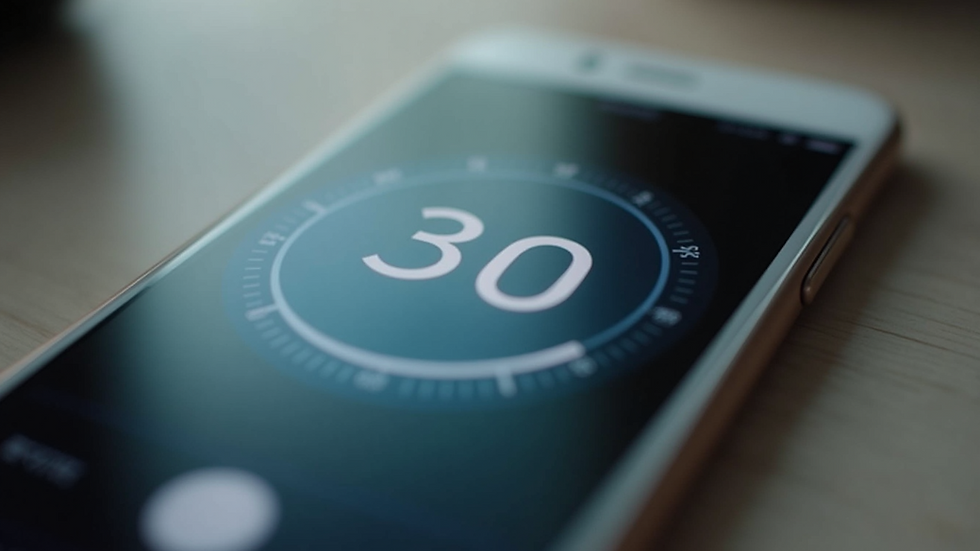Understanding the Mobile App Development Process
- davidson jean
- Sep 29
- 4 min read
Creating mobile applications is an exciting journey that transforms ideas into powerful tools. Whether you want to boost productivity, enhance wellness, or simplify travel, understanding the process behind app creation can help you make smarter decisions. I’m here to walk you through the essential steps, share practical tips, and encourage you to take the leap into the world of apps.
Why Creating Mobile Applications Matters Today
In today’s fast-paced world, mobile apps are more than just conveniences - they are essential tools that connect us, streamline tasks, and improve our daily lives. For individuals and small businesses, creating mobile applications can open doors to new opportunities, better customer engagement, and increased efficiency.
Did you know that over 3.5 billion people use smartphones worldwide? This means your app has the potential to reach a vast audience. But to stand out, your app needs to be smart, user-friendly, and tailored to real needs. That’s why understanding the development process is so important.
When you embark on creating mobile applications, you’re not just building software; you’re crafting an experience. This experience should feel natural, intuitive, and empowering. It’s about making technology feel human again.

The Essential Steps in Creating Mobile Applications
Creating mobile applications involves several key phases, each with its own focus and goals. Here’s a clear breakdown to help you navigate the process:
1. Idea and Research
Start with a clear idea. What problem does your app solve? Who will use it? Research your target audience and competitors. This step helps you refine your concept and ensures your app fills a real need.
2. Planning and Strategy
Outline your app’s features, design, and technology requirements. Decide on the platform - iOS, Android, or both. Planning helps avoid costly changes later and keeps the project on track.
3. Design
Design is where your app starts to take shape visually. Focus on user experience (UX) and user interface (UI). Simple, clean designs work best. Remember, your goal is to make the app feel friendly and easy to use.
4. Development
This is the coding phase where your app is built. Developers turn designs into a working product. It’s important to choose the right development approach - native, hybrid, or web app - based on your goals and budget.
5. Testing
Testing ensures your app works smoothly and is free of bugs. It includes functional testing, usability testing, and performance testing. A well-tested app builds trust and keeps users happy.
6. Launch
Once tested, your app is ready for launch. Submit it to app stores and prepare marketing materials. A successful launch requires good timing and promotion to attract users.
7. Maintenance and Updates
After launch, your app needs ongoing support. Fix bugs, add new features, and keep up with platform updates. Continuous improvement keeps your app relevant and valuable.
What are the 7 stages of app development?
Let’s dive deeper into the seven stages that shape every successful app:
Conceptualization - This is where your idea is born. Brainstorm, sketch, and define the core purpose of your app.
Market Research - Analyze competitors and understand your audience’s needs. This helps you position your app effectively.
Wireframing and Prototyping - Create blueprints and interactive models of your app. This visual guide helps everyone understand the flow and design.
Design - Develop the look and feel. Focus on colours, typography, and layout that resonate with your users.
Development - Write the code and build the app’s functionality. This stage requires collaboration between designers and developers.
Testing - Identify and fix issues. Testing ensures your app is reliable and user-friendly.
Deployment and Maintenance - Launch your app and keep it updated. Listen to user feedback and improve continuously.
Following these stages carefully can save time and money while delivering a polished product.

Tips for a Smooth Mobile App Development Journey
Creating mobile applications can feel overwhelming, but with the right approach, it becomes manageable and rewarding. Here are some tips to keep you on track:
Start Small: Focus on a minimum viable product (MVP) first. Build the core features and test the market before expanding.
Choose the Right Team: Whether you hire freelancers, an agency, or build in-house, pick people who understand your vision and communicate well.
Prioritize User Experience: A simple, intuitive app wins users. Avoid clutter and keep navigation straightforward.
Test Early and Often: Don’t wait until the end to test. Regular testing catches issues early and improves quality.
Plan for Updates: Technology changes fast. Be ready to update your app to keep it compatible and secure.
Use Analytics: Track how users interact with your app. Data-driven decisions help you improve features and engagement.
If you want expert help, consider partnering with professionals who specialize in mobile app development. They can guide you through the process and bring your vision to life.
Empower Your Ideas with the Right Tools and Mindset
Creating mobile applications is not just about technology; it’s about empowerment. It’s about turning your ideas into tools that make life easier and more enjoyable. Whether you want to improve wellness, boost productivity, or simplify travel, your app can make a difference.
Remember, every great app started with a simple idea and a clear purpose. Stay focused, be patient, and keep learning. The journey may have challenges, but the rewards are worth it.

By understanding the process and embracing the right strategies, you can create apps that truly empower people and businesses. Let your creativity flow, and don’t hesitate to seek support when needed. Your app could be the next big thing that changes how people live and work.
Ready to start your app development journey? Take the first step today and watch your ideas come to life!




Comments